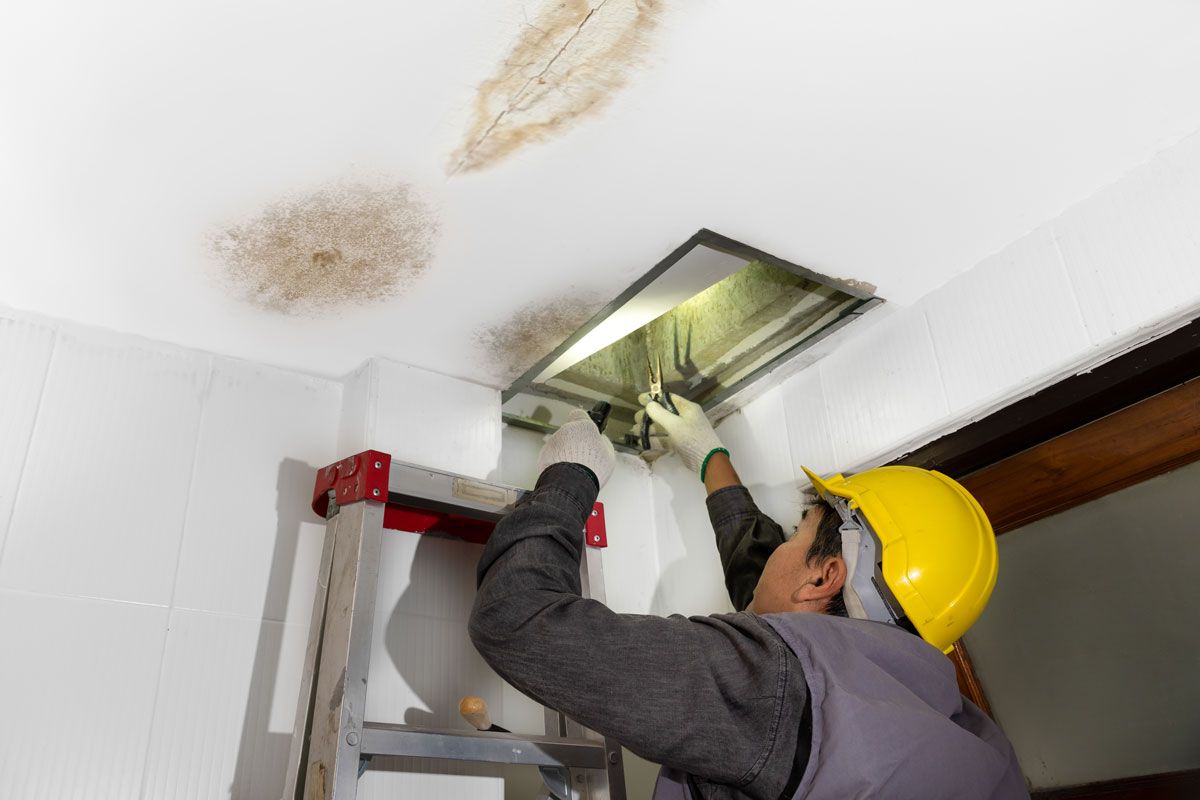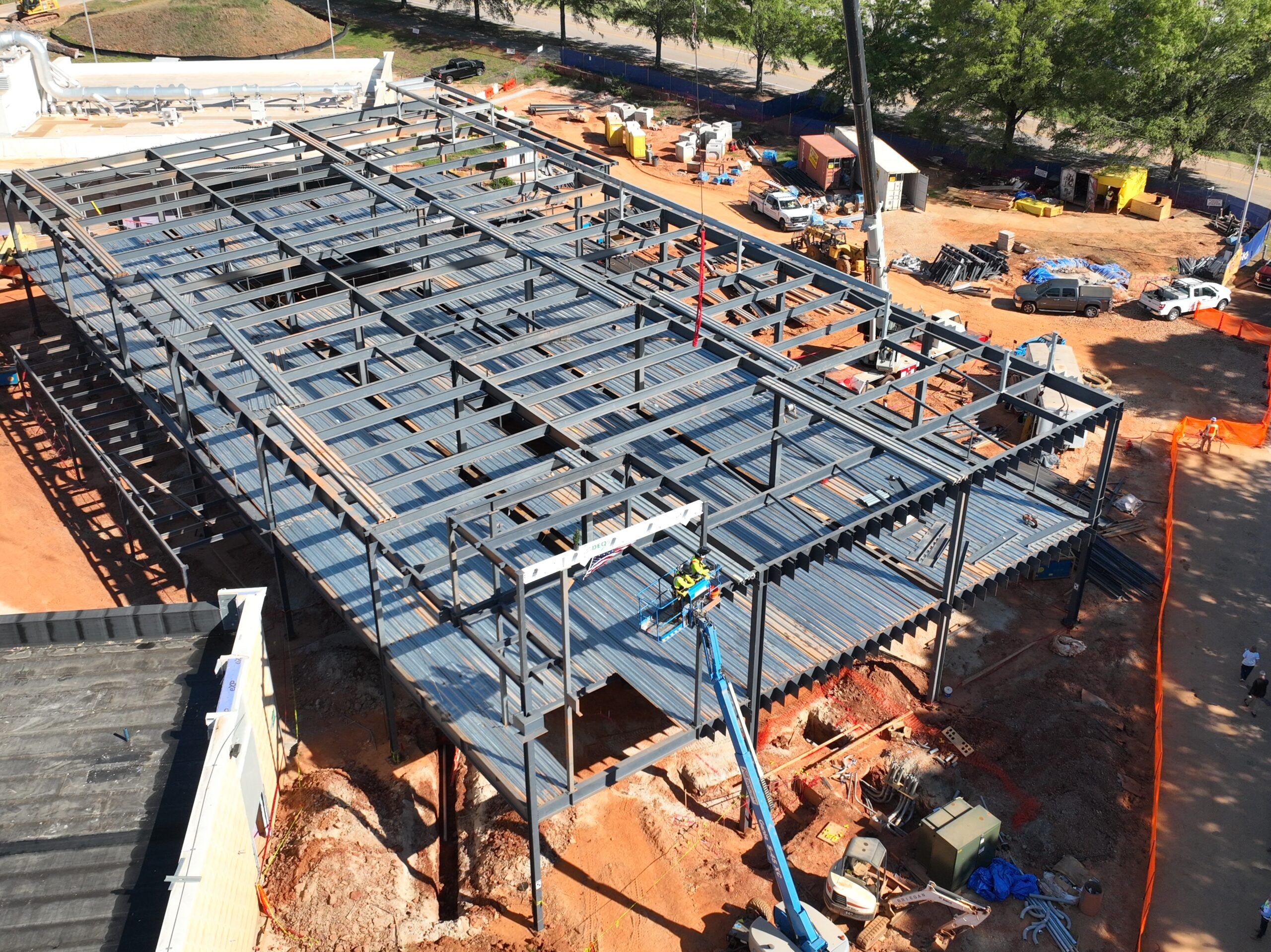Preventing commercial water damage requires proactive maintenance, regular inspections and an emergency plan to address risks from plumbing, HVAC and drainage systems. Water damage is a significant threat to commercial properties, often resulting in extensive repair costs and operational disruptions.
In the commercial real estate sector, water damage accounts for approximately 75% of all property losses, with issues related to plumbing, HVAC systems and appliances being the primary culprits. Roof leaks contribute another 15% of claims.
Understanding the leading causes of water damage and implementing preventive strategies is crucial for property managers and owners looking to safeguard their investments.
The High Stakes of Water Damage
Water damage in commercial properties extends beyond immediate repair costs. Business interruptions, often a consequence of water-related incidents, can lead to lost revenue and long-term reputational damage. When a commercial property is forced to close temporarily, the financial impact can exceed the cost of physical repairs, making it essential for property owners to adopt a proactive approach to water damage prevention.
The following are six of the most common causes of water damage and how to prevent them:
1. Plumbing and Sprinkler System Failures
Plumbing and sprinkler systems are vital to the functioning of any commercial building, but they are also common sources of water damage. Deterioration in pipes, particularly at joints and elbows, can lead to leaks that may go unnoticed until significant damage has occurred. Environmental factors, such as high humidity or extreme weather, can accelerate wear on these systems.
For example, in areas like Florida, where humidity and corrosive air are prevalent, pipes are more susceptible to corrosion. In colder climates, the cycle of freezing and thawing during winter can cause pipes to crack or burst. Sprinkler systems, while essential for fire safety, can also malfunction due to accidental damage or improper use.
Regular maintenance and inspections are crucial for preventing plumbing and sprinkler system failures. Building managers should prioritize routine checks, especially in older buildings, to identify signs of wear before they escalate into major issues. Educating tenants and building occupants about the importance of reporting leaks or potential problems promptly also can help mitigate risks.
2. Roof Leaks
Flat roofs, common in commercial buildings, are particularly prone to leaks. Water tends to pool on these roofs, and if not properly drained, it can seep into the building, causing extensive damage to ceilings, walls and other structural components. Roof leaks are often the result of deferred maintenance, where minor issues are left unaddressed until they become significant problems.
To prevent roof leaks, regular inspections by qualified professionals are essential. These inspections can identify potential issues such as cracks, damaged shingles or improper drainage. When a leak is detected, immediate action is required to prevent further water intrusion. This may involve covering the affected area with tarps and beginning the drying process to prevent mold growth.
3. HVAC System Malfunctions
HVAC systems, while essential for maintaining indoor air quality and temperature, can also be a source of water damage if not properly maintained. Condensation buildup, a common issue with HVAC systems, can cause water to overflow if the drains are clogged or not functioning correctly. Rooftop HVAC units are particularly vulnerable to leaks, especially if regular maintenance is neglected.
Preventing HVAC-related water damage requires consistent maintenance and inspections. This includes checking for leaks and ensuring that condensation drains are clear. It’s also important to keep filters and other components in working order. Addressing potential problems before they escalate can prevent costly water damage and extend the lifespan of the HVAC system.
4. Poor Drainage
When gutters, downspouts and drainage systems become clogged with debris, water can back up and cause damage to the building’s foundation and interior. Proper landscaping and grading around the building can help direct water away from the foundation, reducing the risk of damage.
In regions with high water tables or complex drainage systems, such as Miami, additional measures may be necessary to prevent flooding. Installing French drains or underground pumps can help manage excess water, but regular maintenance of these systems is essential to ensure they function correctly.
5. Appliance Failures
Commercial properties often rely on various appliances—such as water heaters, dishwashers and refrigerators—which can cause significant water damage if they fail. Regular maintenance of these appliances, including checking hoses and fittings for signs of wear, is crucial for preventing leaks.
In the event of an appliance failure, it’s important to shut off the water supply to the affected appliance immediately and begin the drying process to minimize damage. Regular inspections and proactive maintenance can prevent many of these failures and reduce the risk of water damage.
6. Sewer Backups
Sewer backups are particularly hazardous because they involve contaminated water, posing serious health risks. Commercial properties connected to city sewer systems are vulnerable to backups, especially if the city’s drainage system is not properly maintained. Properties with septic systems must also maintain regular inspections to prevent backups. Preventing sewer backups requires a proactive approach, including regular inspections of sewer lines and septic systems.
Providing waste baskets in restrooms can help prevent clogs and reduce the risk of backups. In the event of a sewer backup, cleaning or restoration professionals should use appropriate personal protective equipment and thoroughly sanitize affected areas to prevent health hazards.
Developing a Proactive Maintenance Plan
Preventing water damage in commercial properties requires a proactive approach to maintenance and emergency preparedness. Establishing a regular inspection schedule for plumbing, roofing, HVAC systems and appliances is essential for identifying potential issues before they cause significant damage.
A comprehensive maintenance plan should include routine checks and prompt repairs, which means educating tenants and staff about the importance of reporting problems as soon as they are noticed.
In addition to regular maintenance, having an emergency response plan in place is crucial. This plan should outline who to contact in the event of a water damage emergency, including electricians, plumbers, HVAC technicians and other specialists. A clear, well-communicated plan can help minimize the disruption caused by water damage and ensure a swift recovery.
Water damage can be a costly and disruptive event for commercial properties, but by understanding the leading causes and implementing preventive measures, property owners can protect their investments. A proactive approach to maintenance and a well-prepared emergency plan can significantly reduce the risk of water damage and its associated costs, ensuring that commercial buildings remain safe, functional and free from water damage.
BIO
With a career spanning over a decade in the general construction industry, Shawn Havalotti has been a driving force in Remediation and Restoration since 2006. He holds multiple IICRC certifications, ASHE training, and a CCITI healthcare remediator certification. His expertise has led to two nationally showcased fire restoration projects, featured on television and in magazines. From managing six- to seven-figure projects and overseeing every detail from initial loss to final delivery, to hands-on roles like extraction and selective demolition, Shawn’s comprehensive experience covers every facet of the industry.
Preventing water damage in commercial properties requires a proactive approach to maintenance and emergency preparedness. Establishing a regular inspection schedule for plumbing, roofing, HVAC systems and appliances is essential for identifying potential issues before they cause significant damage.
A comprehensive maintenance plan should include routine checks and prompt repairs, which means educating tenants and staff about the importance of reporting problems as soon as they are noticed.
In addition to regular maintenance, having an emergency response plan in place is crucial. This plan should outline who to contact in the event of a water damage emergency, including electricians, plumbers, HVAC technicians and other specialists. A clear, well-communicated plan can help minimize the disruption caused by water damage and ensure a swift recovery.
Water damage can be a costly and disruptive event for commercial properties, but by understanding the leading causes and implementing preventive measures, property owners can protect their investments. A proactive approach to maintenance and a well-prepared emergency plan can significantly reduce the risk of water damage and its associated costs, ensuring that commercial buildings remain safe, functional and free from water damage.
BIO
With a career spanning over a decade in the general construction industry, Shawn Havalotti, District Manager of United Water Restoration Group, has been a driving force in Remediation and Restoration since 2006. He holds multiple IICRC certifications, ASHE training, and a CCITI healthcare remediator certification. His expertise has led to two nationally showcased fire restoration projects, featured on television and in magazines. From managing six- to seven-figure projects and overseeing every detail from initial loss to final delivery, to hands-on roles like extraction and selective demolition, Shawn’s comprehensive experience covers every facet of the industry.












